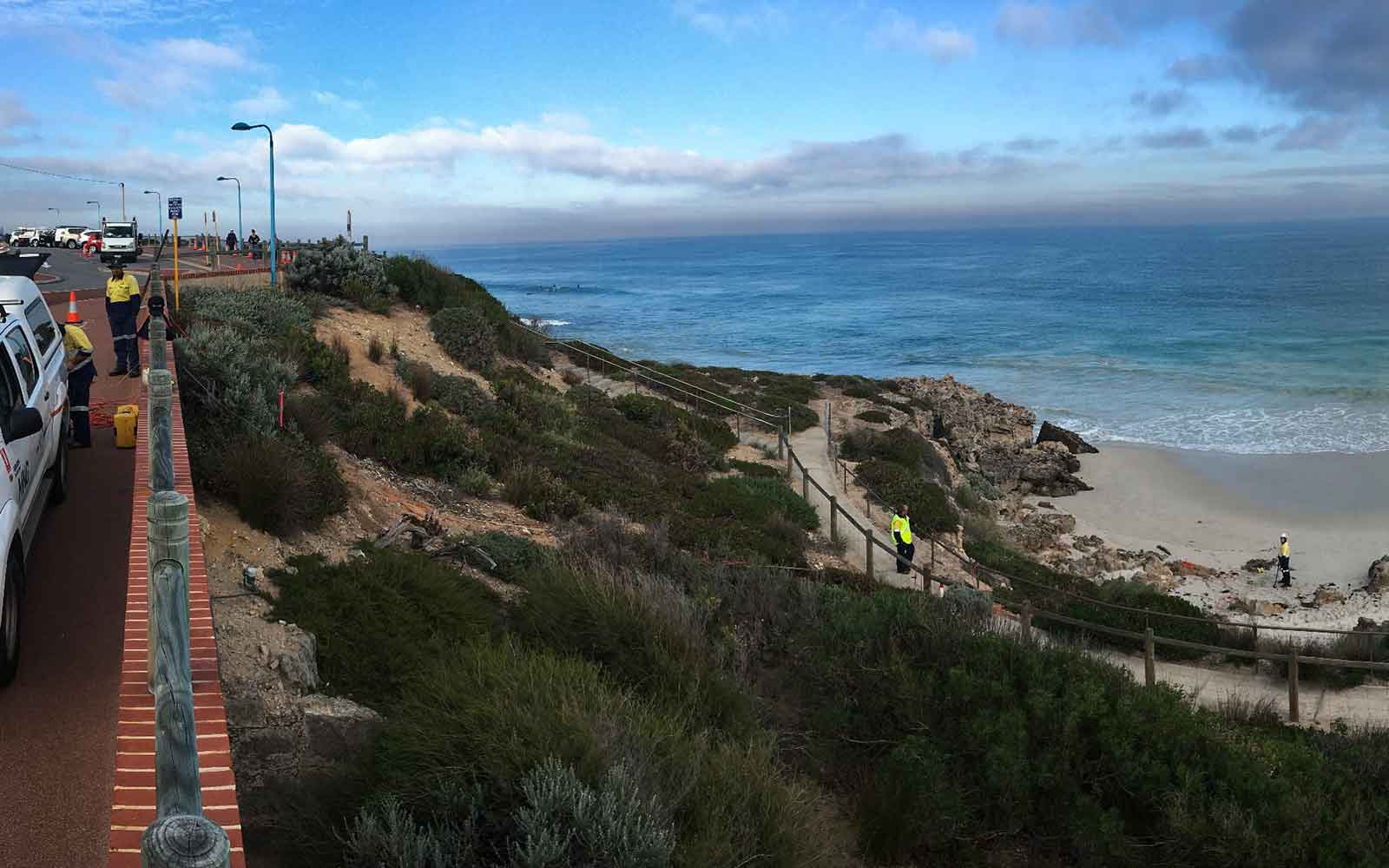Chemical and Lab Testing

Measurements of Carbonation Depth
Applications
- Assess the extent of atmospheric acidification
- Assess concrete passivation protection or on the steel
- Estimate the remaining life of a concrete structure
Method
Measurements of carbonation depth provide an assessment of the extent of alkaline protection provided by the original concrete and the extent to which this has been lost due to atmospheric acidification. Carbonation depths are determined by spraying a freshly cut surface with a phenolphthalein pH indicator per the EN 14630 - 06. The indicator changes colour to magenta when the concrete has high enough alkaline content to passivate the reinforcement.

Data Analysis & Presentation
Locations of areas with low or high passivity protection are presented on CAD drawings. If the minimum depth of cover, the carbonation depth and the age of the structure are known, an estimate can be made for the remaining of the structure.
Laboratory and Chemical Analysis
Applications
- Determine concrete pH profile, chloride profile, sulphate content
- Determine cement content of concrete
- Measure concrete compressive strength
- Provide information on the nature of the coarse and fine aggregates, cement ratio, degree of hydration, voids, carbonation depth and fractures and alkali-aggregate reaction products
Method
For chemical analysis, the sample should be at least five times the volume of a large-sized aggregate within the concrete (typically 20-50 g). This can be collected using samples of dust from percussive drilling.
Samples for chloride and sulphate content should be at least 50 g. This can be achieved with a 50 mm diameter core sample. Cores are normally cut into slices to determine the chloride profile (typically 0-10 mm, 10-25 mm, 25-40 mm and 40-60 mm to the approximate depth of the reinforcement). Sulphates typically affect the concrete at the surface therefore two cuts are normally sufficient. Acid soluble chloride and sulphate content by weight are normally determined per the AS 1012.20-1992.
Where large intact samples are required for compression strengths (as per the AS 1012.14) or visual examination, samples are taken using a diamond-tipped coring barrel with water as coolant and flush. The compressive strength testing usually requires at least three core samples for each structure. The minimum core size is 75 mm diameter (depending on the aggregate size) and should have a diameter to length ratio of 1:2. The compressive strength samples are usually checked for mass per unit volume, following the rapid method AS 1012.12.1-1986. Compressive strength is determined under the AS 1012.14-1991. Alternatively, the samples may be wet when preconditioned if the concrete is normally in contact with water.
The cement content can be determined from the soluble silica and calcium oxide content per the AS 2701-2001. These results can then be used to determine the cement content by calculation based on assumed proportions.
The petrographic analysis involves visual examination of a thin section by optical and scanning electron microscope. Testing is performed under ASTM C856.
Data Analysis & Presentation
Data is presented in tables and on CAD drawings where applicable.
Tailings Management: Get in touch
Consider a 'Tailings First' approach for your facility and avoid creating a potentially catastrophic risk for the environment.
GBG combines industry-proven geophysical methods, geotechnical physical characterisation, hydrogeological modeling and assessment, and airborne methods for point-based data capture in assessing your requirements. Talk to us today for more information regarding this essential service for your tailings facility.
Case Studies
GBG has completed over 1000 projects since its conception with multiple stakeholders and countless clients. GBG is proud to showcase some of these projects.
Enquire Now
We look forward to discussing your project with you, please complete the form below or contact one of our offices directly.
Please note: GBG Group is compliant with the General Data Protection Regulation (GDPR). To learn more about how we collect, keep, and process your private information in compliance with GDPR, please view our privacy policy. *









